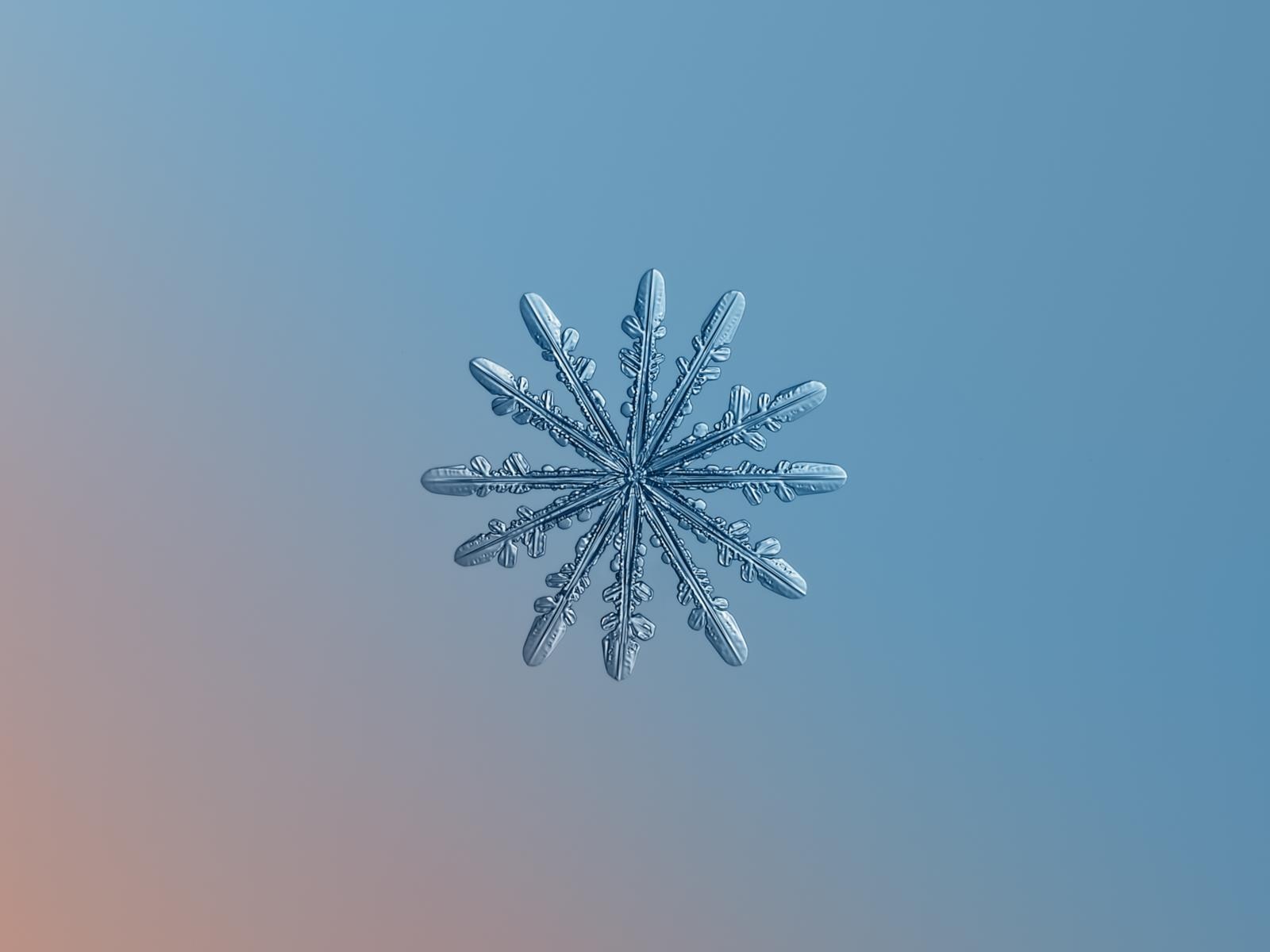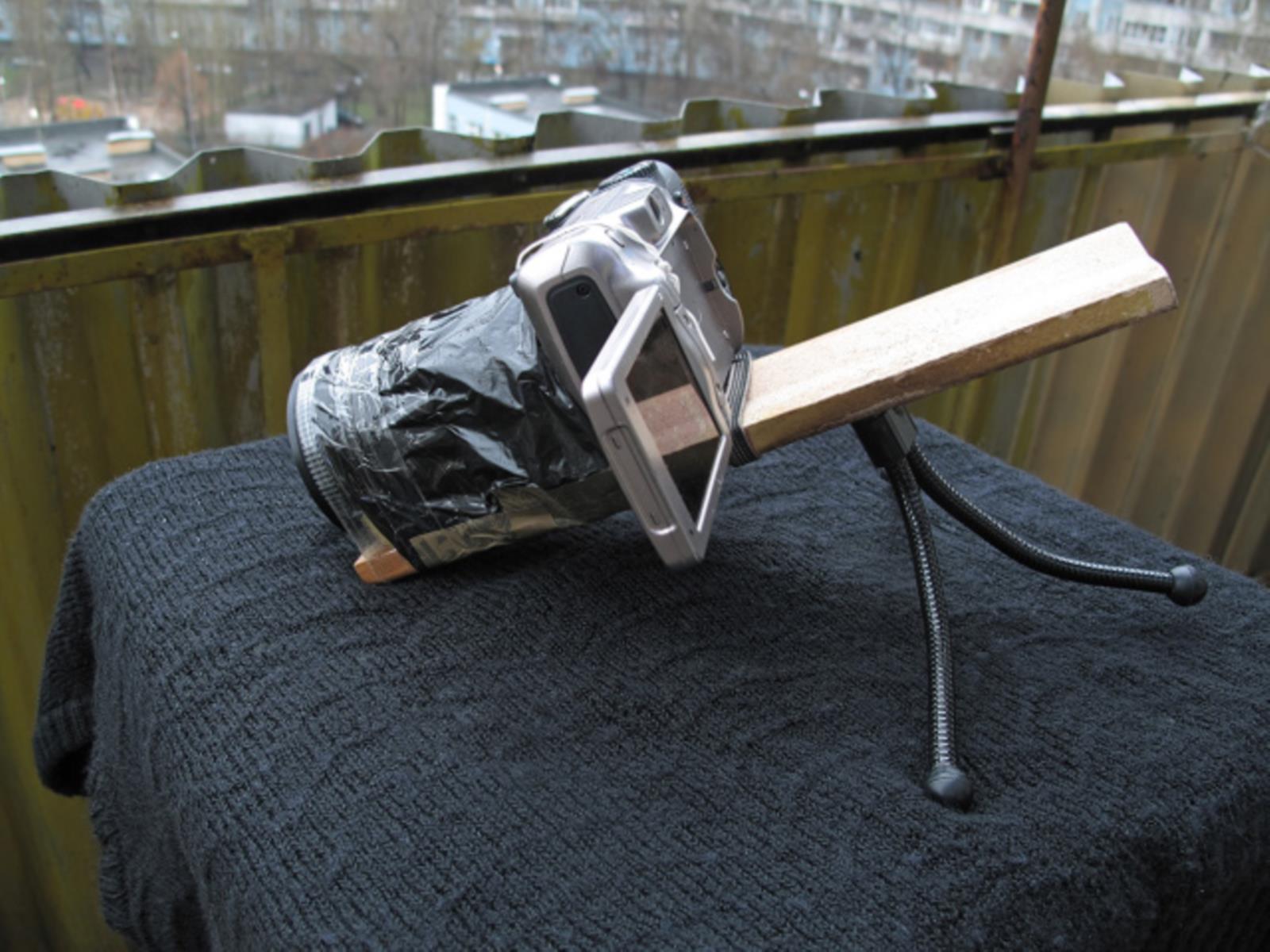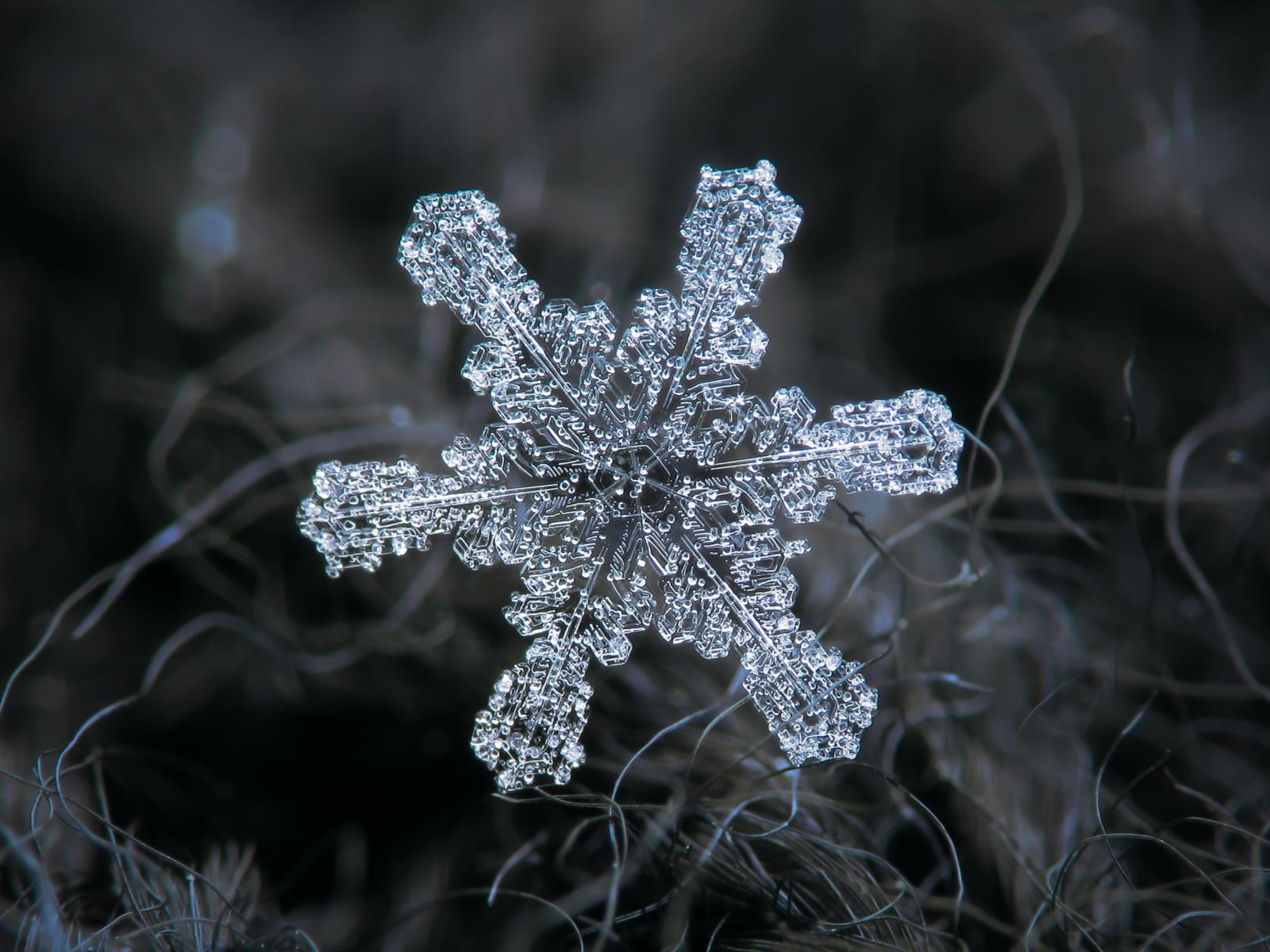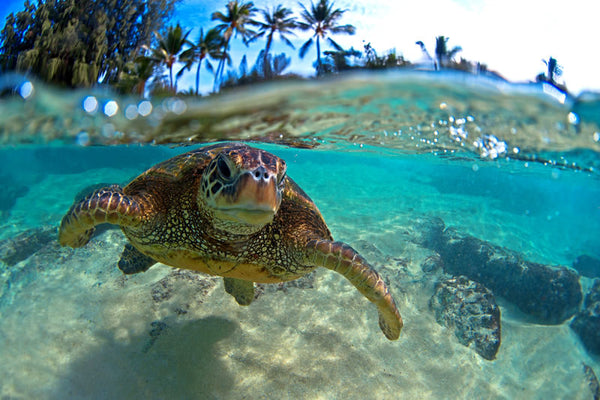https://www.rferl.org/a/russian-photographer-uses-soviet-technology-to-photograph-snowflakes/28919831.html
 Russian photographer, Alexey Kljatov, works as a printing press operator and learned how to photograph snowflakes using old and inexpensive camera equipment. He uses a ten year old Canon Powershot, a Soviet lens taped to the camera, and a board to angle and steady the camera to create a very powerful device. His pictures are extremely detailed. Kljatov has the snowflakes resting on either black wool, or on a glass sheet. Both bases make each snowflake stand out. As soon as snow starts falling in Moscow, he goes out to capture what he can.
Russian photographer, Alexey Kljatov, works as a printing press operator and learned how to photograph snowflakes using old and inexpensive camera equipment. He uses a ten year old Canon Powershot, a Soviet lens taped to the camera, and a board to angle and steady the camera to create a very powerful device. His pictures are extremely detailed. Kljatov has the snowflakes resting on either black wool, or on a glass sheet. Both bases make each snowflake stand out. As soon as snow starts falling in Moscow, he goes out to capture what he can. Here, he has the camera set up to get the flakes. He uses an old black sweater for the background. I have found in my own experience, that wool, or other soft materials will absorb shock well when the snowflakes land, will stay intact instead of breaking or shattering.
Here is the result.









